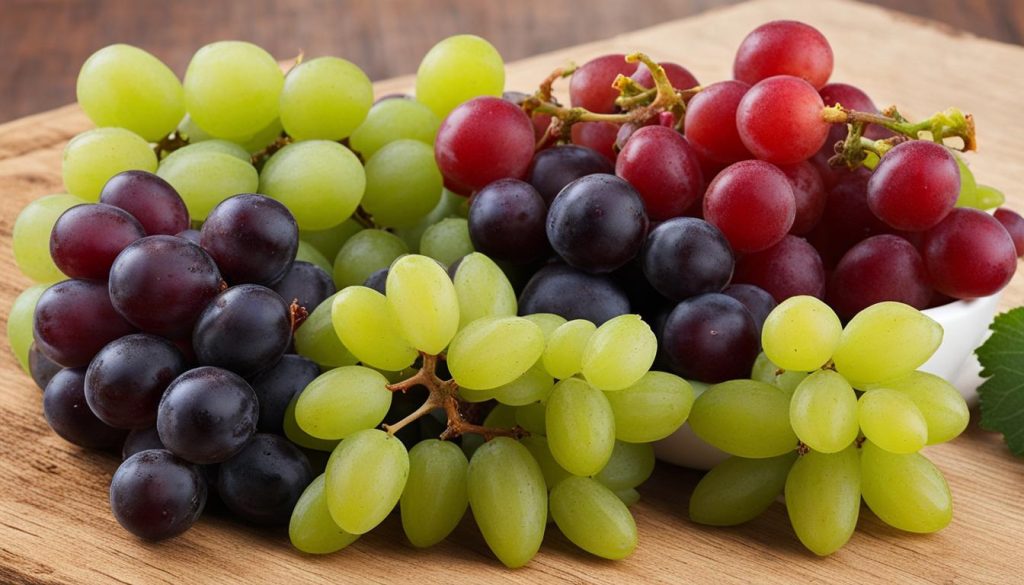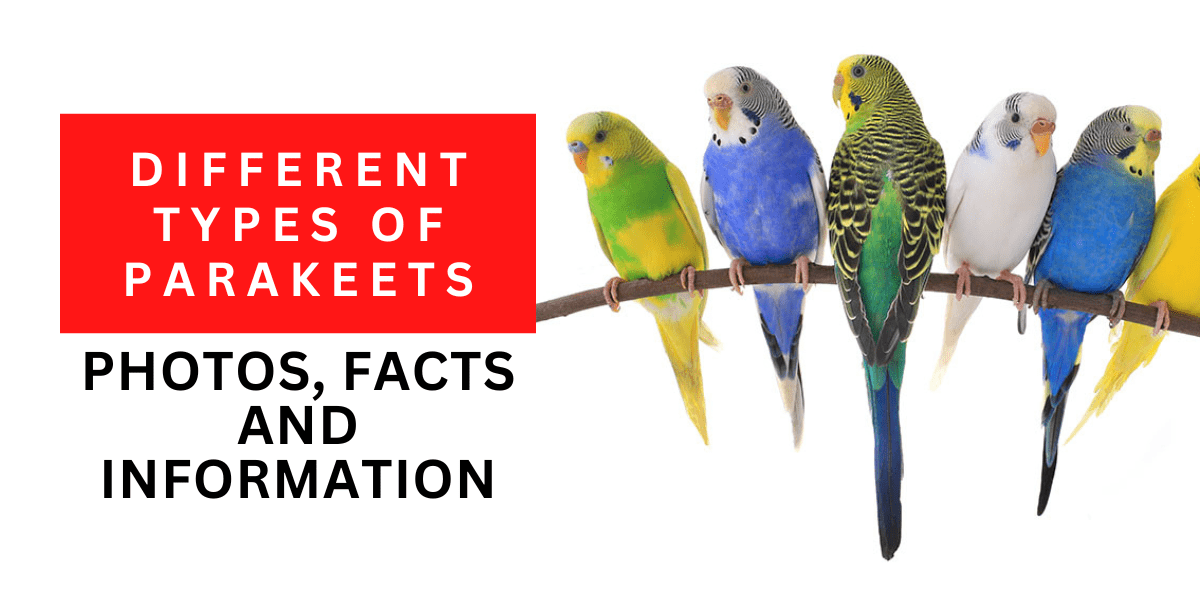As a guinea pig owner, you want to ensure that your furry friend is getting a well-balanced diet. Guinea pigs, or cavies, have specific dietary needs, and it’s essential to provide them with safe and nutritious foods. One common question that arises is whether guinea pigs can eat grapes. In this article, I will explore the topic and give you all the information you need to know.
Guinea pigs can enjoy a varied diet consisting of hay, pellets, fruits, and vegetables. While the majority of their diet should be grass or hay, they can also have fresh fruits and vegetables as a supplement. The good news is that guinea pigs can indeed eat grapes! Grapes are a popular and delicious fruit that can be fed to guinea pigs as an occasional treat.
Can Guinea Pigs Eat Grapes? Yes. They can enjoy a small treat!
- Guinea pigs can eat grapes as an occasional treat.
- Grapes are packed with essential nutrients like vitamin C and antioxidants.
- Due to their high sugar content, grapes should not be a regular part of a guinea pig’s diet.
- It’s important to feed grapes in moderation to avoid potential health issues.
- Consult with a veterinarian before making any changes to your guinea pig’s diet.
The Advantages of Feeding Grapes to Guinea Pigs
When it comes to guinea pig nutrition, grapes offer several advantages as a tasty and nutritious addition to their diet. These small fruits are packed with essential nutrients that can benefit your furry friend’s overall health and well-being.
Rich in Vitamin C and Fiber
Grapes are a great source of vitamin C, which is essential for guinea pigs since they cannot produce this vitamin on their own. Vitamin C helps support their immune system and promotes healthy skin and connective tissue. Additionally, grapes provide high levels of fiber, which aids in digestion and maintains a healthy digestive system for your guinea pig.
Antioxidant and Anti-Inflammatory Properties
These delicious fruits also contain antioxidants, which help balance free radicals in the body and protect against cellular damage. Grapes are particularly rich in resveratrol, a plant compound known for its powerful anti-inflammatory properties. This can be beneficial for guinea pigs with inflammatory conditions or age-related ailments.
A Balanced Addition to the Diet
While grapes offer these advantages, it’s important to exercise caution and feed them in moderation. Due to their high sugar content, overconsumption of grapes can lead to an imbalance in intestinal bacteria and potentially cause health issues. Remember to treat grapes as an occasional treat and ensure that the majority of your guinea pig’s diet consists of hay, pellets, and a variety of other fruits and vegetables to maintain a balanced nutrition.
Appropriate Serving Size and Preparations for Grapes
When it comes to feeding grapes to guinea pigs, it’s important to understand the appropriate serving size and preparation methods to ensure their safety and enjoyment. Although grapes can be a delicious treat for guinea pigs, it’s crucial to offer them in moderation due to their high sugar content. The recommended serving size for grapes is one to two medium-sized grapes per week. This amount allows guinea pigs to enjoy the nutritional benefits of grapes without consuming excessive sugar.
When preparing grapes for your furry friend, some people choose to remove the skin to reduce the risk of choking. However, it’s important to note that removing the skin decreases the nutrients your guinea pig will receive. If you decide to keep the skin on, be sure to clean the grapes thoroughly to remove any potential pesticides or dirt. Slicing the grapes in halves or quarters is also recommended, as it makes them easier for guinea pigs to eat and minimizes the risk of choking.
If you can find seedless grapes, they are preferable for guinea pigs as they eliminate the risk of choking on the seeds. However, if seedless grapes are not available, you can remove the seeds by hand before feeding them to your guinea pig. Handle your guinea pig’s diet with care and consult with a veterinarian before making any changes. Remember, overfeeding grapes or any other food can lead to an upset stomach or other health issues, so it’s important to provide them in moderation as part of a balanced diet for your guinea pig.
Does the Type of Grape Matter?
When it comes to feeding grapes to guinea pigs, you may be wondering if the type of grape makes a difference. While there are differences in taste and characteristics among grape varieties, the good news is that green, red, and purple grapes are all safe for guinea pigs to enjoy in moderation.
Green grapes generally have a higher sugar content compared to darker-colored grapes, but they lack the powerful flavonoids and resveratrol found in their purple counterparts. Purple grapes are slightly less sweet than green grapes but offer the added benefits of flavonoids and resveratrol. As for red grapes, they are typically considered the best option for guinea pigs as they are the least sweet while still containing flavonoids and resveratrol.

Ultimately, the choice of grape variety for your guinea pig depends on personal preference and availability. Remember, however, that grapes should only make up a small part of your guinea pig’s diet. It is important to provide a balanced nutrition by including a variety of fruits and vegetables along with hay, pellets, and water to ensure your guinea pig’s overall health and well-being.
Grapes as Part of a Balanced Diet for Guinea Pigs
When it comes to feeding your guinea pig, it’s important to provide a balanced diet that meets their nutritional needs. While guinea pigs can enjoy the occasional treat of grapes, it’s crucial to offer them in moderation. Grapes are packed with essential nutrients like vitamin C, antioxidants, and high water content, making them a sweet and nutritious addition to your furry friend’s diet.
However, due to the high sugar content of grapes, it’s recommended to feed only 1-2 medium-sized grapes per week. Overfeeding grapes can lead to an upset stomach or other health issues, so it’s crucial to consult with a veterinarian before making any changes to your guinea pig’s diet. Remember, grapes should only make up a small part of your guinea pig’s overall diet, which should primarily consist of hay, leafy greens, and a small portion of pellets.
The Importance of Balanced Nutrition
Providing a balanced diet is essential for the overall health and well-being of your guinea pig. Alongside their regular intake of hay, pellets, and fresh water, incorporating a variety of fruits and vegetables ensures they receive the necessary vitamins, minerals, and fiber they need to thrive. While grapes offer valuable nutrients, it’s important to offer a diverse range of fruits and vegetables to provide a well-rounded nutrition.
Some other safe fruits that can be included in your guinea pig’s diet are cantaloupe, kiwi, strawberries, and apples (with the seeds removed). These fruits can be offered as tasty and nutritious treats, but remember to limit their intake and focus on the main components of their diet such as hay and leafy greens.
Feeding your guinea pig a balanced diet ensures their nutritional needs are met and supports their overall health. Remember to consult with a veterinarian to customize their diet based on their specific needs and monitor their weight and health regularly. With proper care and a well-balanced diet, your guinea pig can lead a happy and healthy life.
Other Safe Fruits for Guinea Pigs
While grapes can be enjoyed by guinea pigs as an occasional treat, there are also many other safe fruits that can be included in their diet. Variety is key to ensuring a balanced nutrition for your guinea pig. Here are some other fruits that you can offer to your furry friend:
Cantaloupe
Cantaloupe is a tasty and hydrating fruit that guinea pigs can enjoy. It is rich in vitamins A and C, as well as fiber. Remember to remove the seeds and rind before serving.
Kiwi
Kiwi is packed with vitamin C and provides a good amount of fiber. It’s a refreshing treat that can be given to guinea pigs in small slices.
Strawberries
Strawberries are a delicious and nutritious fruit that can be offered to guinea pigs. They are high in vitamin C and antioxidants. Make sure to remove the green tops before serving.
Apples (with the seeds removed)
Apples are a popular choice for guinea pigs. They are a good source of vitamins and fiber. However, it’s important to remove the seeds as they contain small amounts of cyanide, which can be harmful to guinea pigs.
Remember, fruits should only make up a small part of a guinea pig’s overall diet. The main components should be hay, leafy greens, and a small portion of pellets. Always introduce new fruits slowly and in moderation, and consult with a veterinarian if you have any concerns about your guinea pig’s diet.
Conclusion
Grapes can be a tasty and nutritious addition to a guinea pig’s diet. They are packed with essential nutrients like vitamin C, antioxidants, and high water content. However, it’s important to offer grapes in moderation to avoid potential health issues. Overfeeding grapes can lead to an imbalance in intestinal bacteria, so it’s crucial to stick to the recommended serving size of 1-2 medium-sized grapes per week.
When considering a guinea pig’s diet, it’s essential to provide a balanced nutrition. Grapes should only make up a small part of their overall diet, which should primarily consist of hay, leafy greens, and a small portion of pellets. This balanced approach ensures that your guinea pig receives all the necessary nutrients for their health and well-being.
If you’re unsure about incorporating grapes into your guinea pig’s diet, it’s always a good idea to consult with a veterinarian. They can provide personalized advice and recommendations based on your guinea pig’s specific needs. Remember, a varied and well-rounded diet is key to keeping your furry friend happy and healthy!
FAQ
Can guinea pigs eat grapes?
Yes, guinea pigs can eat grapes as an occasional treat.
Why are grapes good for guinea pigs?
Grapes are packed with nutrients like vitamin C, protein, magnesium, phosphorus, and calcium. They also contain antioxidants and resveratrol, which have anti-inflammatory properties.
Can grapes be a staple in a guinea pig’s diet?
No, grapes should not be a staple in a guinea pig’s regular diet due to their high sugar content. Regular consumption of high-sugar foods can cause health issues.
How many grapes can I feed my guinea pig?
The recommended serving size for grapes is one to two medium-sized grapes per week.
Do I need to prepare grapes before feeding them to my guinea pig?
It’s important to clean the grapes thoroughly and slice them in halves or quarters to make them easier for guinea pigs to eat.
Are all types of grapes safe for guinea pigs?
Yes, green, red, and purple grapes are all safe for guinea pigs to eat, but red grapes are considered the best option due to their lower sugar content and the presence of flavonoids and resveratrol.
Can guinea pigs have grapes as their main food?
No, grapes should only make up a small part of a guinea pig’s diet, which should primarily consist of hay, leafy greens, and a small portion of pellets.
What are other safe fruits for guinea pigs?
Other safe fruits for guinea pigs include cantaloupe, kiwi, strawberries, and apples (with the seeds removed).






